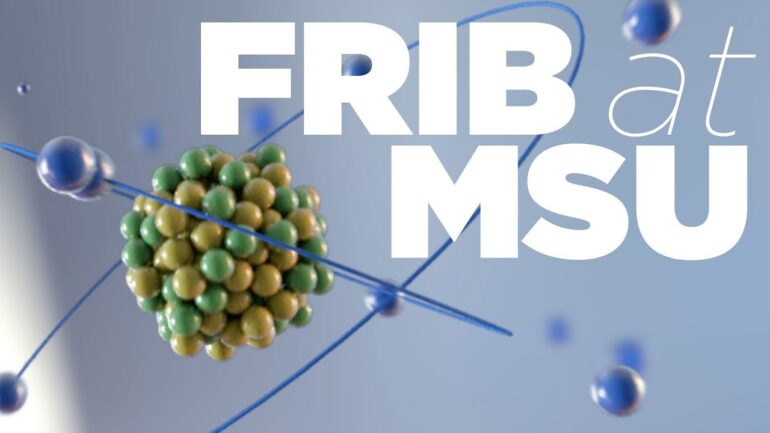TL;DR:
- FRIB, Michigan State University’s Facility for Rare Isotope Beams, is integrating artificial intelligence (AI), specifically machine learning, into its research and operations.
- The partnership involves support from the U.S. Department of Energy’s Office of Nuclear Physics (NP) and the Office of High Energy Physics (HEP).
- AI has the potential to accelerate experimental discovery in nuclear physics by addressing various technical challenges.
- Multiple grants have been awarded to FRIB scientists, focusing on applications ranging from nuclear astrophysics to atomic core physics.
- These grants aim to reduce experiment time, enhance scientific insights, and streamline facility processes.
- FRIB’s commitment to training the next generation of nuclear scientists is reinforced through these initiatives.
- A collaborative project with Virginia State University highlights the broader recognition of AI’s role in scientific exploration.
Main AI News:
The Facility for Rare Isotope Beams (FRIB) at Michigan State University stands as a testament to human curiosity and technological innovation. Housing a one-of-a-kind particle accelerator, FRIB has been at the forefront of expanding our comprehension of the natural world. Today, it takes another giant leap forward, embracing the transformative potential of artificial intelligence (AI) through machine learning.
In a collaborative effort, FRIB is partnering with the U.S. Department of Energy’s Office of Nuclear Physics (NP) and the Office of High Energy Physics (HEP) to integrate AI into its research and operations. Timothy Hallman, DOE associate director of science for Nuclear Physics, emphasizes the game-changing potential of AI, stating, “Artificial intelligence has the potential to shorten the timeline for experimental discovery in nuclear physics.” This exciting development promises to address a myriad of technical challenges in simulations, control, data acquisition, and analysis, propelling nuclear physics into a new era.
FRIB scientists have secured several grants to propel this initiative forward. Led by distinguished professors Christopher Wrede, Dean Lee, Peter Ostroumov, and Yue Hao, these grants span a wide range of applications, from experimental discovery in nuclear astrophysics to enhancing our understanding of atomic cores. Wrede’s team is dedicated to expediting experiments in nuclear astrophysics with their grant, “Machine Learning for Time Projection Chambers at FRIB,” shedding light on celestial processes.
Meanwhile, Lee and his colleagues are embarking on theoretical work with the grant titled “STREAMLINE Collaboration: Machine Learning for Nuclear Many-Body Systems.” Their shared objective is to accelerate the quest for comprehensive insights into atomic core physics, fostering a deeper understanding of these fundamental building blocks of matter.
Ostroumov and his team are pursuing the grant, “Online Autonomous Tuning of the FRIB Accelerator Using Machine Learning.” By harnessing vast amounts of operational data, they aim to streamline facility processes, reducing maintenance time and facilitating more scientific research at FRIB.
Yue Hao leads two grants, “Development of Differentiable Beam Dynamics Simulation Tools Including Collective Effects for HEP Accelerator Applications” and “Artificial Intelligence Application in Nonlinear Beam Dynamics Study for Future HEP Accelerators.” Both grants emphasize the integration of machine learning into accelerator physics, enhancing computational studies in this domain.
These groundbreaking grants, awarded by the Office of Nuclear Physics and the Office of High Energy Physics, are poised to drive significant advancements in nuclear science. As a DOE-SC user facility, FRIB is dedicated to serving the global nuclear science research community, aligning with the DOE-SC mission to deliver transformative discoveries and scientific tools.
Beyond its scientific impact, FRIB, in collaboration with the Department of Energy-Office of Science, is committed to nurturing the next generation of nuclear scientists. This endeavor seeks to bolster interest in AI and machine learning among students, fostering a new wave of talent in the field.
Furthermore, FRIB extends its collaborative efforts to Virginia State University, where Thomas Redpath, an assistant professor in the Department of Chemistry, and Paul Guèye, associate professor of nuclear physics at FRIB and MSU’s Department of Physics and Astronomy, join forces in a project titled “Neural Network Classifier for Analyzing Measurements of Fast Neutrons for Invariant Mass Spectroscopy.” This collaboration underscores the widespread recognition of AI’s potential in scientific exploration.
Conclusion:
The integration of AI and machine learning at FRIB represents a significant step forward in nuclear physics research. This development has the potential to revolutionize the field, expedite discoveries, and inspire future generations of scientists. It also highlights the growing importance of AI in scientific research and its potential impact on the broader market for advanced scientific tools and technologies.

